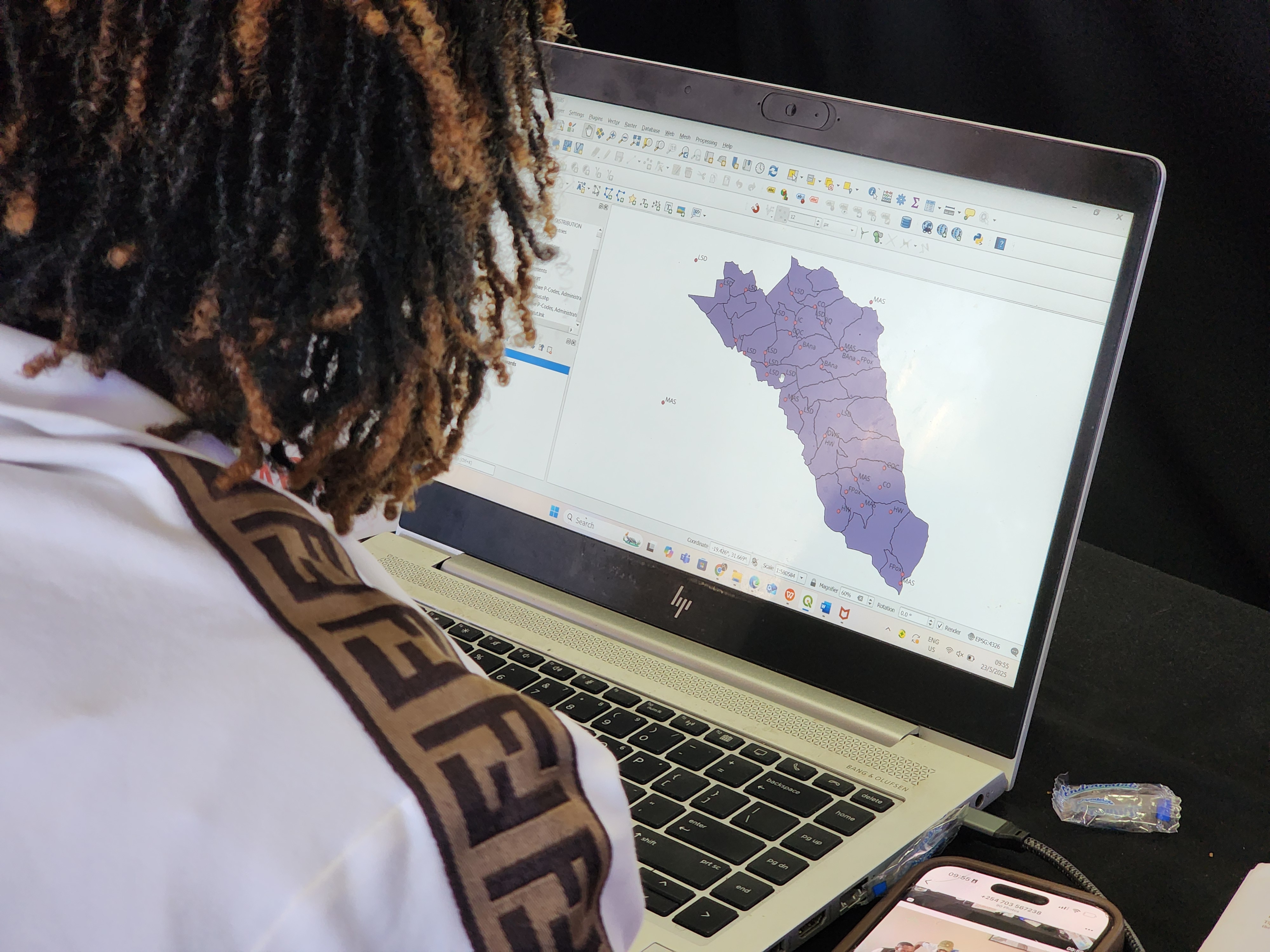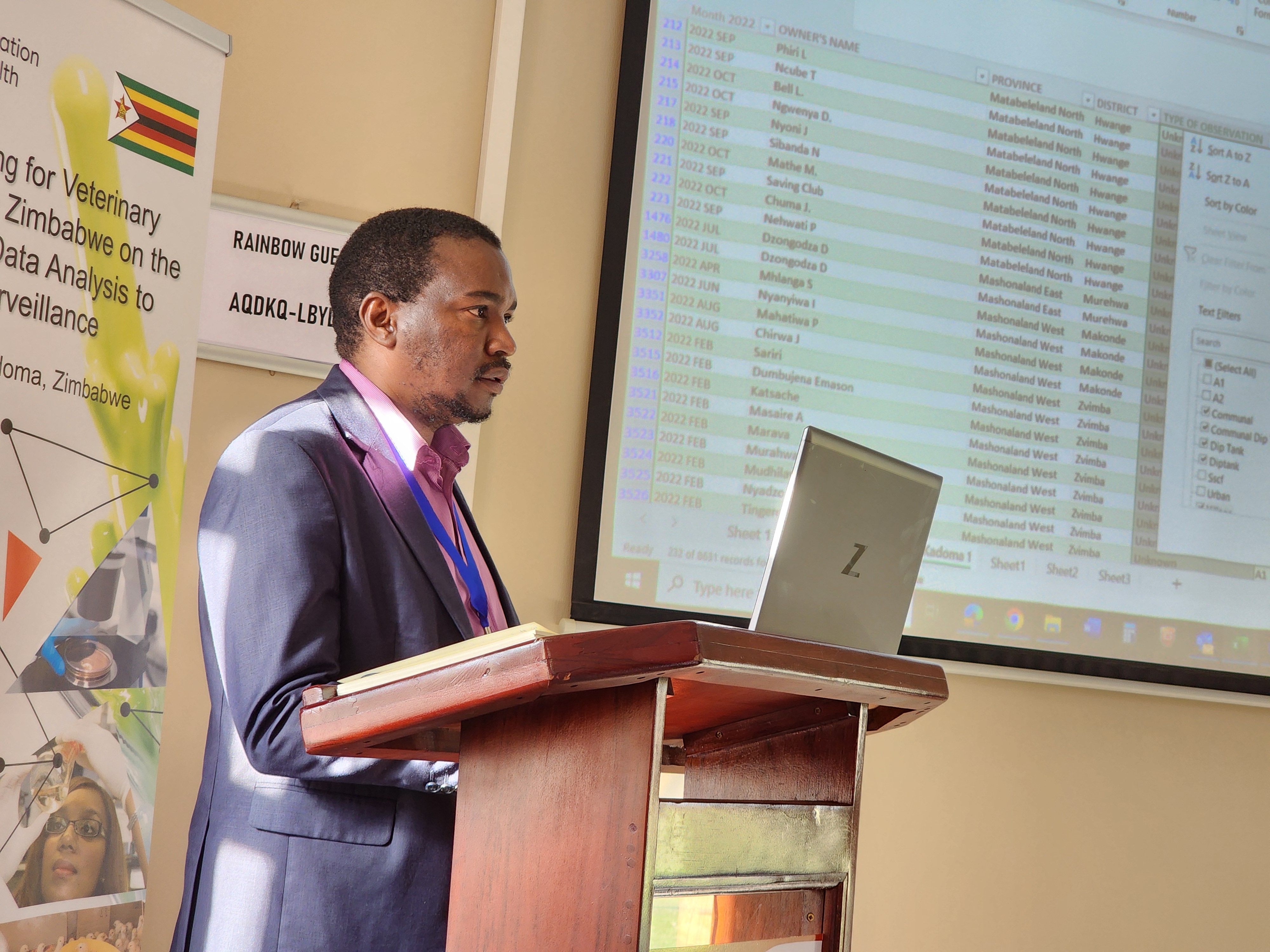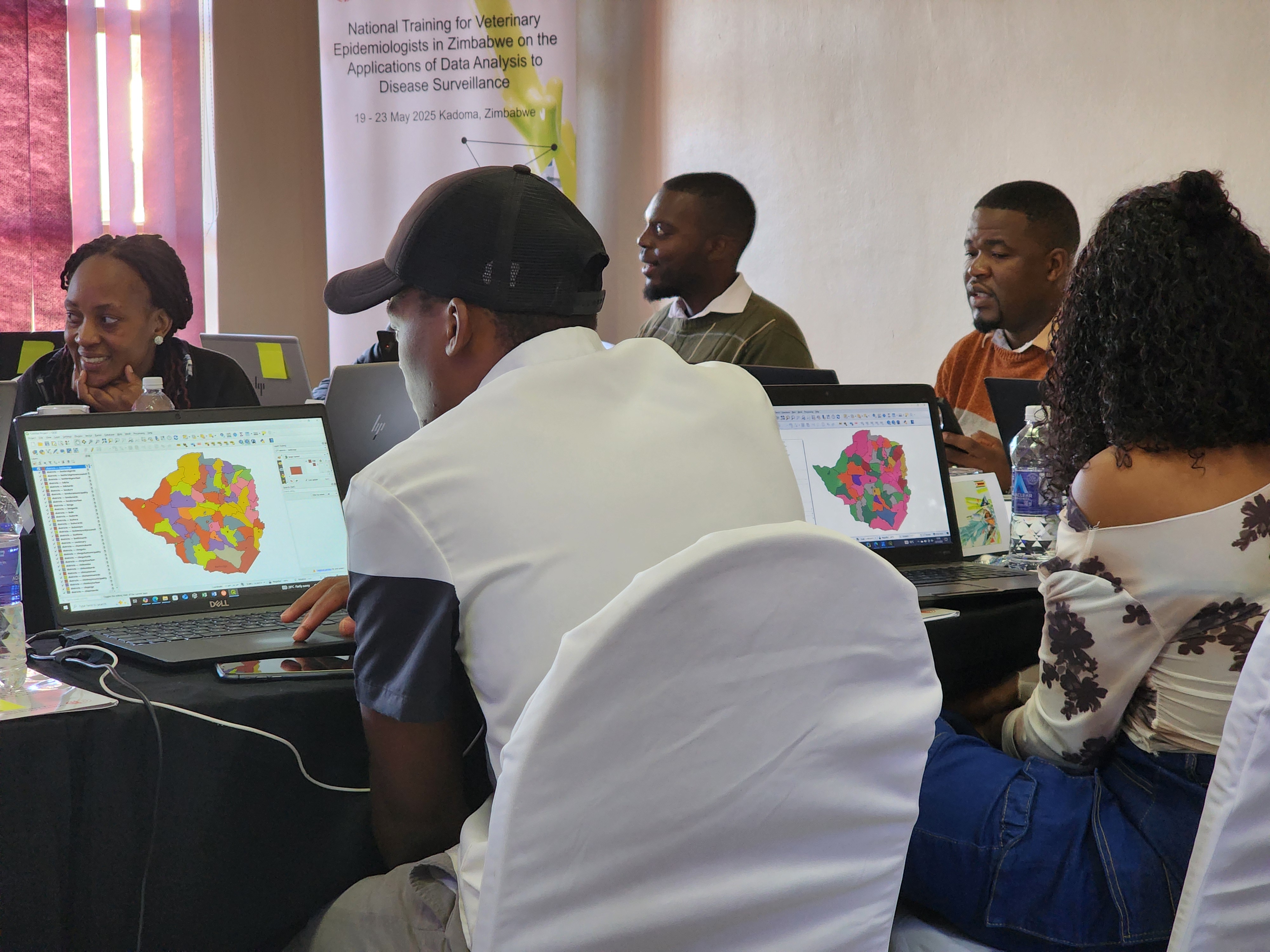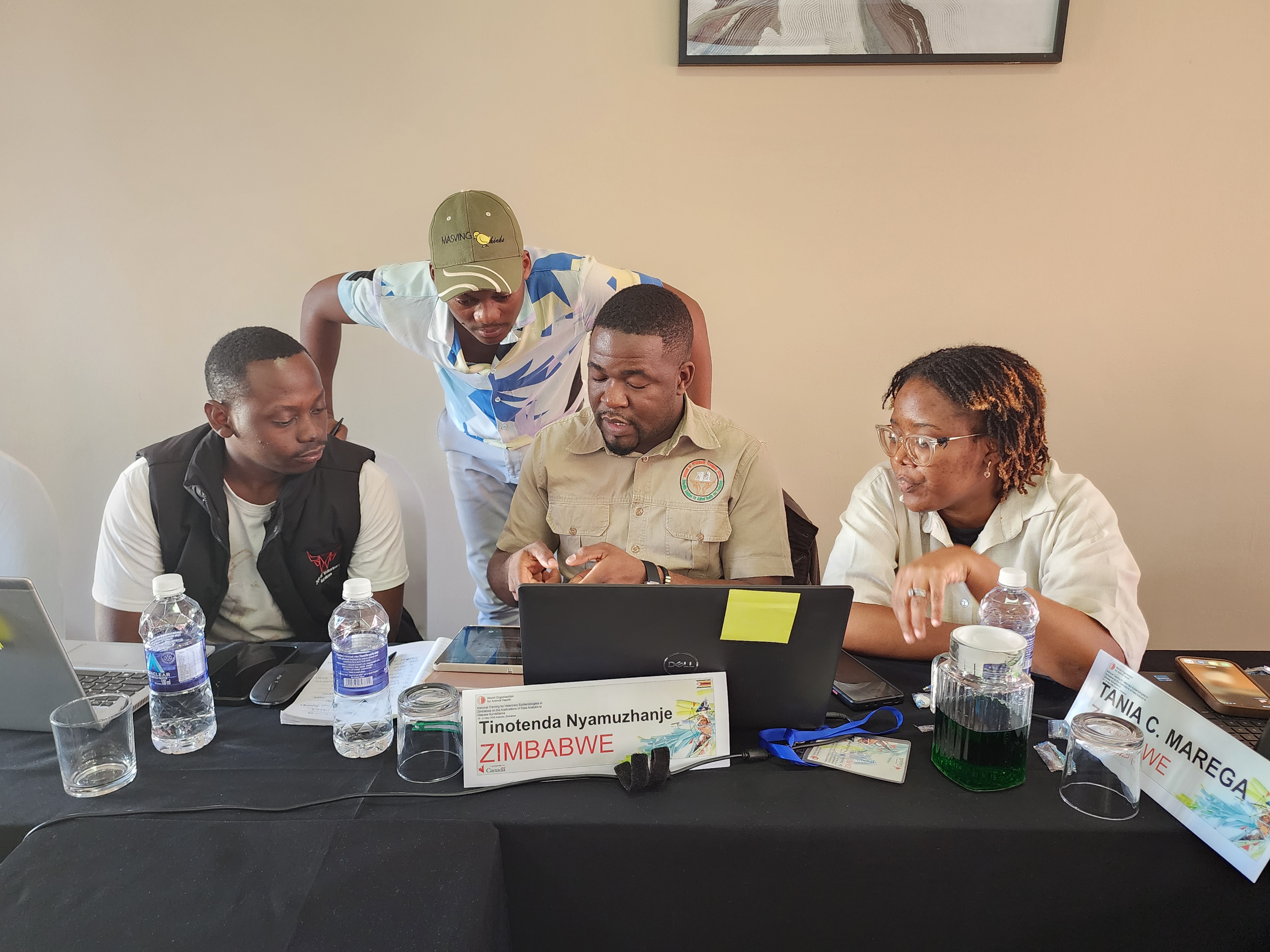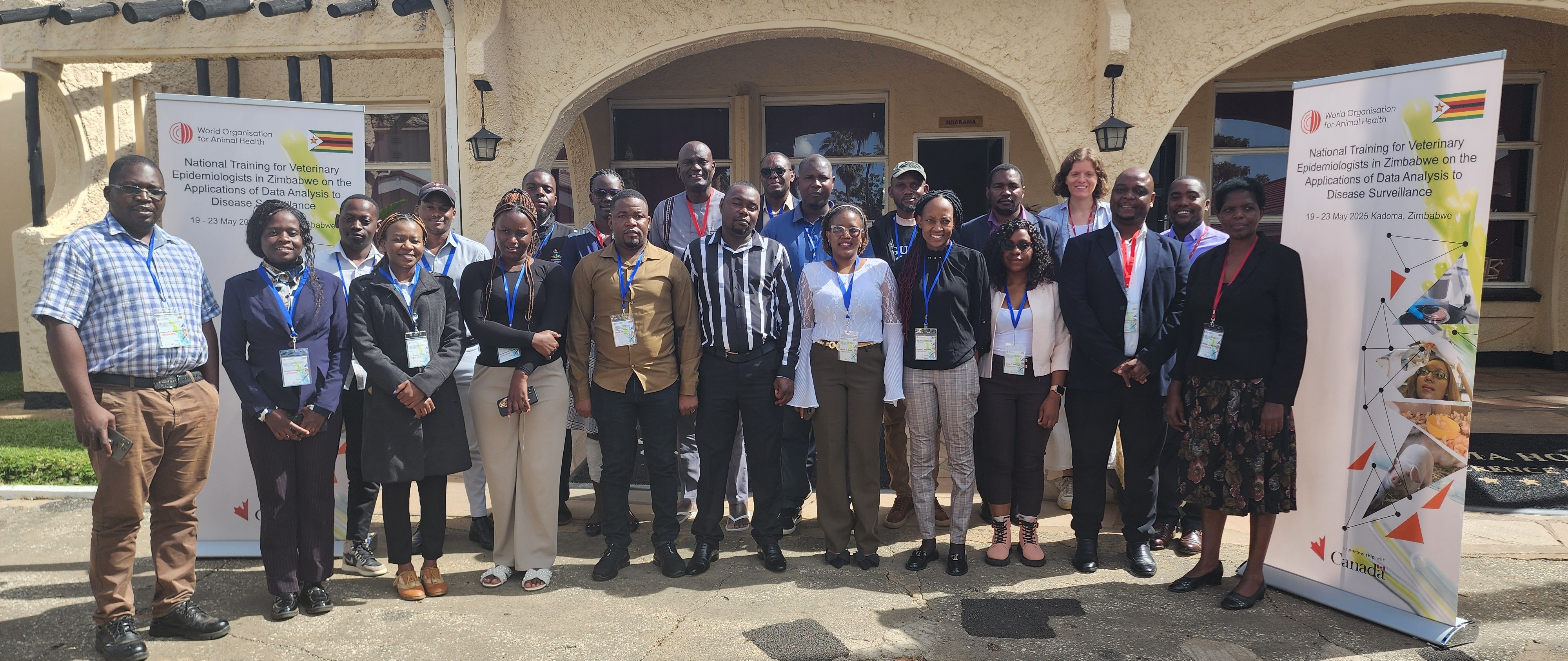
Effective use of data is essential for robust epidemiological surveillance, enabling both national and international collaboration in disease control and improving the early detection of animal diseases and suspicious biological events. In April 2024, the World Organisation for Animal Health (WOAH) organised a comprehensive regional training on bioinformatics and data management for animal health professionals from five English-speaking countries participating in the Fortifying Institutional Resilience Against Biological Threats (FIRABioT) project: Kenya, Malawi, Namibia, Tanzania, and Zimbabwe
Following this training and based on its national priorities, Zimbabwe requested for a national training on the applications of data analysis to disease surveillance, for the country’s national and provincial veterinary epidemiologists. The training that was held on 19 – 23 May 2025 in Kadoma, brought together 16 veterinary epidemiologists to strengthen their capacity in managing and analysing surveillance data, conducting risk assessments, and developing effective disease surveillance plans. The aim was to strengthen Zimbabwe’s capacity to prevent, detect, and respond to animal health emergencies — including agro-crime and agro-terrorism events.
Focal Point FIRABioT for Zimbabwe, Dr. Reverend Spargo, during the data visualisation session. Picture © I. Busuulwa (woah) 2025.
Opening remarks were delivered by Dr Reverend Spargo, FIRABioT Focal Point for Zimbabwe, and Dr Tapiwanashe Hanyire, Deputy Director of Epidemiology and Informatics, who provided an overview of Zimbabwe’s current disease surveillance system, which comprises disease reporting, laboratory diagnostics, risk assessment, and data analysis.
Throughout the week, participants engaged in hands-on exercises focused on data cleaning, analysis, spatial mapping, statistical modelling, and data visualisation using Excel, RStudio, and QGIS. They also explored key concepts in risk analysis and risk assessment as applied to disease surveillance planning. Finally, they were exposed to national and international reporting channels, as well as WOAH’s status recognition process.
Participants using QGIS for spatial mapping of disease outbreaks in Zimbabwe. Picture © I. Busuulwa (woah) 2025.
At the conclusion of the training, Dr Innocent Chabanga, speaking on behalf of the participants, reflected on the impact of the workshop – “We are now ready to put into practice everything we’ve learned here, including sharing our knowledge with colleagues. In addition to technical skills, we’ve also developed valuable interpersonal skills. Thanks to this workshop, we are better equipped to strengthen Veterinary Services and improve disease control in Zimbabwe.”
The workshop was facilitated by;
Participants engaged in group work to discuss surveillance systems. Picture © E. Wijers (woah) 2025.
The National Training for Veterinary Epidemiologists on the Applications of Data Analysis to Disease Surveillance forms part of Zimbabwe’s activities as a beneficiary of the Fortifying Institutional Resilience against Biological Threats (FIRABioT) Project. This project is funded by Global Affairs Canada’s Weapons Threat Reduction Programme in support of the Global Partnership Signature Initiative to Mitigate Biological Threats in Africa.
